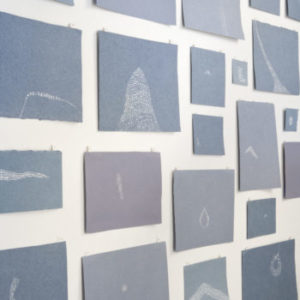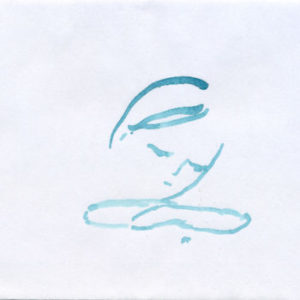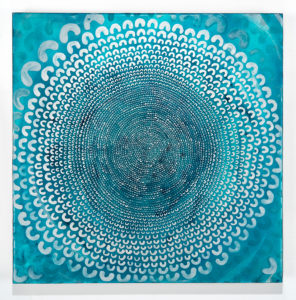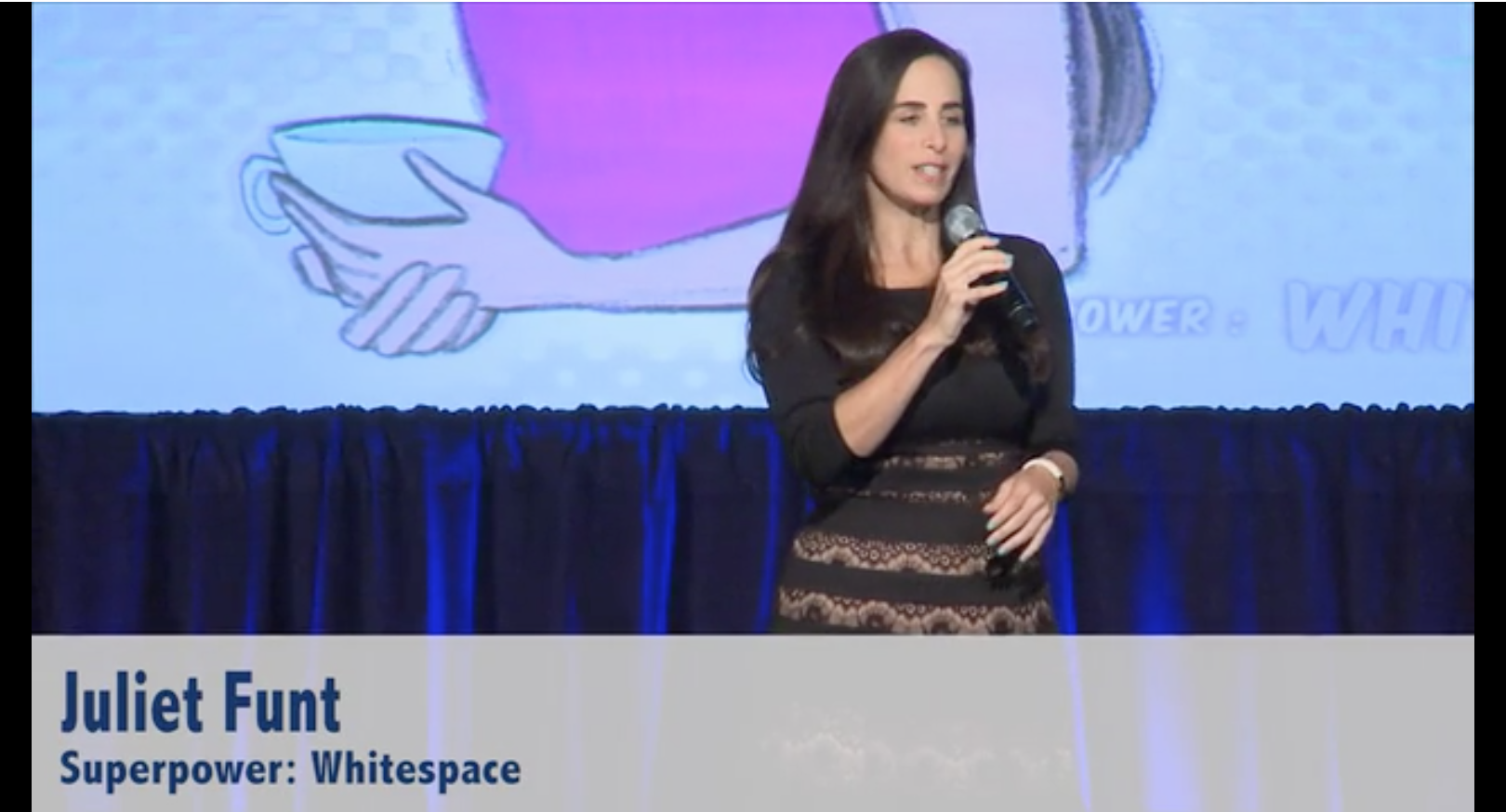Create Spaciousness in Your Work Day
Have you ever heard an artist to say, “I love the hours I spend on my computer, applying for shows, writing my artist’s statement, organizing my images and responding to emails. It’s so much FUN!”?
Almost every artist I know would rather be in the studio, hands in the materials, making stuff.
The administrative and business work associated with being an artist is tedious to most creative types and sometimes downright loathsome.
This can result in putting things off until the last minute, and then rushing through them, subtly (or overtly!) resenting the task at hand, and feeling pressed for time.
In this video, I share some methods I’ve developed for keeping the same sense of balance and expansiveness when working on my computer as I experience in my meditation practice.
Our brains can get caught up in the task at hand, so I read these two phrases to myself to connect with my deeper, overarching intentions throughout the day. Just reading them to myself, shifts my consciousness and attitude.
I experience the spaciousness of time as I work on my computer.
I take frequent pauses to check in with my deeper self.
Here is the link for the free download of the meditation timer I mention (for Mac users):
http://meditationresources.com/
Questions? Comments? Leave them below…
Leave a Comment
Why is my paint separating?
Paint that has been unused for several months or years or that has been improperly milled can sometimes separate, meaning the actual pigment separates from the binder.
Here’s my response to a Mindful Artist community member’s question about that. What to do? Is it OK to use?
What about you? Have you had paint separate on you? And what did you do. Please share in the comments section below.
Leave a Comment
Art & Meditation: Creating A Daily Practice
In this post, I’m continuing our exploration of how artists can use meditation as a
tool to improve their studio practice. You can read more in Part I and Part 2.
Recently I was asked, what is the difference between mindfulness and meditation? While mindfulness is being aware in the present moment, meditation is the means to cultivate mindfulness. It takes practice – just like learning to tie your shoelaces. When you were small, you may have struggled quite some time to learn this. But now you do it so effortlessly, you scarcely know the steps.

This daily practice of sitting in meditation can also be applied to sitting to make art. Picasso used to say, “Inspiration exists, but it must find you well placed at your work.” To me, “well placed” means showing up regularly to the studio, without fail, even if I’m feeling some resistance to the idea. Because the first ten minutes of work is always the hardest. Once you get going, the work carries you.
You know that feeling when you first wake up? When your thinking is clear and your mind is calm? Many people tell me that is when they have their best creative thinking. I know it’s true for me. When I have a challenging project before me, I like to devote at least 25 minutes on it when I first wake up following my meditation time. Some people get that fresh mind from taking a shower. I think that’s why many people say they get their best ideas in the shower. I think it’s similar to meditation. Your body is washed clean and with it, your thoughts. You’re relaxed, you are not trying to think of anything in particular or do anything else. Your mind becomes clear. Ideas flow in.
Meditation can give you that “fresh mind” any time of the day, no water required. I call meditation a superhighway to new ideas and solutions. When you slow thoughts, observe thoughts, your mind can open to its higher centers of creative thinking.

I have found that many artists struggle to find consistency in their creative practice. The first thing I recommend is setting aside 15 minutes to make art. Daily. I find that even the busiest people who truly want to make art can find 15 minutes a day. Consistency is key. Because your body, your mind, your heart and your soul get used to that time. It’s as if you were ready for it. The more you do it, the more ready you are.
The benefit of being consistent is that you find your mind is actually working on your art at other times, in the background, while you are doing other things. The creative problem-solving continues even when you are not actually in the studio.
Here are some things to consider to help you get started:
- Think about your mornings. Is there a way to carve out an extra 15 min to write/paint/draw before you walk out the door to work? I like to have my tea while I draw sometimes.
- What about lunch time? Can you keep some simple supplies such as paper, pens and markers at work for 15 minutes of drawing time during your break?
- What about your evening? After dinner, can you take fifteen minutes alone to draw, sketch, or scribble some ideas?
- No matter what time of day you choose, set a timer. Fifteen minutes goes by quick, and you may be surprised about what happens in a short, focused period of time.
- Create space. Consistency is easier if you have a place to work and have what you need. Whether it’s a corner of your desk with a jar of pencils or an entire room, make sure you have a place to create with your supplies close by.
How do you make time in your busy life for your art? What challenges do you face to building a daily habit? I invite you to share some of your questions or challenges, or your routines and habits that work in the comments section below.
Leave a Comment
Meditation and the Studio: Becoming Aware
It may surprise you to learn that I wasn’t a star pupil in art school. Not one of those students who carried those black, hard-backed sketchbooks everywhere, bursting with sketches, paintings and collages. Not the kind of art student who spent every waking hour making things. I was a diligent, attentive student. I did the assigned work, attended every class and loved it all. But when I started, I hadn’t the first clue how to turn out original work.

After graduation, I went through a difficult period in my creative life. I knew I wanted to devote my life to making art. But crushing self-doubts and critical voices plagued me every time I tried to work in the studio. I showed up to the studio regularly and managed to get work done, but I suffered from inexplicable fatigue due to the inner emotional stress of these critical voices. I sometimes grew distracted and unfocused. I sought out self-help books and groups for creative people, and slowly and subtly things began to change.
In my work as a teacher and artist for over thirty years, I know of many artists can relate to this feeling of paralysis or being stuck. For me, turning to mindfulness and meditation helped me make that shift to becoming the artist I am today. A lot of people believe that meditation or mindfulness is about reaching some exalted state, but it is actually about learning to be present.
When we practice meditation we naturally become more aware. Aware of our thoughts, our unconscious habits, the feelings and thoughts of the people around us, our impact on others. And the longer we practice, the more we notice. We notice subtle things that were always there – we just couldn’t see them before. Sort of like someone whose fuzzy vision becomes clearer with a new pair of glasses.

This type of deep noticing can have a profound impact on our creative work. As Paul Valéry put it: “To see is to forget the name of what one is seeing.” By being fully present with what we are creating, we can move beyond preconceptions and habits and encounter the work afresh.
If you’ve never spent time meditating before, you may find your mind to be a very messy place. Most of us have habits and patterns of thought that we unwittingly developed in our youth by simply imitating the patterns of thought of those around us. Patterned thoughts become like grooves in our brain – neural pathways – that can create habits of self-criticism, fear, doubt, cynicism, pessimism or worry. We scarcely notice them because they are so ingrained in us. And if we don’t notice them, we can hardly be aware that it is those habits or patterns of thought that are driving the circumstances around us.
If you are new to meditation, here are a few simple steps to experiment with it:
- Set aside 5 minutes each morning. As early as possible upon arising is easiest because your mind is still fresh and you don’t have as much resistance to the idea. (I’m too busy, I don’t feel like it, it’s too hard.)
- Find a comfortable and pleasant place to sit. One where you can sit in the exact spot every day.
- And if you have a smartphone, I suggest setting a timer with a gentle ring so your mind doesn’t need to be preoccupied with how long five minutes exactly is.
- Settle in: Ensure that your posture us upright, your chin ever so slightly turned down to elongate the back of your neck. Allow your shoulders to be comfortably loose and relaxed, with your shoulder blades on the same plan as your spine, rather than hunched forward.
- Gently close your eyes and just notice that breath. Pay attention as it fills your lungs quite easily and naturally, and then as it is expelled just as easily through your nostrils.
Thoughts will arise. About whether you remembered to take out the garbage last night, or the first appointment of the day, or that annoying thing your co-worker said yesterday. But you are not going to engage with those thoughts just now. You are going to notice the warmth of the breath as it gently flows in and out. And how your jaw has naturally unclenched and how every muscle is gently melting, releasing habitual tension. And the thoughts may come back: How long has it been now? Surely five minutes is up. I can’t sit here doing nothing! I have so much to do today! And then like a little child who has wandered off, you will gently take your mind by the hand and lead it back to the present moment.
If it helps, you can count your breaths. But just stay with the breath. And without noticing it, you have actually drifted into deep connection. You are not thinking. Then you notice that you are not thinking, and now you are thinking again. And so, you go back to your breath. Such is the task of a meditator. Like trying to take a knot out of a tiny thread with a needle. But hang with it. Please. It gets easier. Because you will untangle that knot and then that tiny thread will stretch out before you free of its knots. Before you know it, there is no thread at all.
Do you currently practice meditation in your daily life? Share your experiences in the comments below!
Leave a Comment
The Importance of Empty Time
 I have been getting so much out of this talk a reader from the Netherlands shared with me. I must have watched it a least 5 times in the past few weeks!
I have been getting so much out of this talk a reader from the Netherlands shared with me. I must have watched it a least 5 times in the past few weeks!
It’s all about the stuff we mindful artists love – using awareness to live a more happy, productive and fulfilled life.
Juliet Funt teaches us about the power of “Whitespace.”
Sounds familiar, doesn’t it? If you have studied art at all you know about the importance of what we call in art “negative space” – that space which surrounds an object or image that is essential to balance the composition. This is the same principle applied to our time.
She defines Whitespace as “the moments in our life which we allow to remain unfilled and ready for what might come.”
We all understand what it’s like to live in this over-stimulating society. We are bombarded by information, overloaded with work and responsibilities, appointments and obligations. We’ve become more and more accustomed to our time constantly being filled. How many of you check your voice email or text messages while waiting in line at the post office, supermarket or bank?
We’ve become more and more accustomed to our time constantly being filled.
How many of you can remember the last time you were bored?
When I first got a smartphone I loved how “efficient” it made me. I coud regain all that previously “lost” time and get more work done, so later I could have more time to make art, clean my kitchen, call my mom, pay bills, etc. Does anyone else use the time waiting in line at the post office, supermarket or bank to check your voice email or text messages?
But it gets to be too much, doesn’t it? After a while, the constant activity and stimulation become draining.
We just want some quiet.
Sometimes now when I have to wait, I instead choose to look at my surroundings, the people, the architecture, the sky, the weather or just reflect on things I have to be happy about or things to appreciate.
But it takes concerted effort to stave off low-value activity
According to Ms. Funt, “This loss of time with no assignment comes at hefty, hefty costs to our life and work.”
Juliet is an engaging, skilful, and entertaining speaker. Although I couldn’t embed her video here, I encourage you to click to watch the full 22-minute talk.
Some of the gems I gleaned are the Four Thieves of Productivity. Each of these qualities are desirable innately but can become destructive when they “overgrow their pots.”
- Drive
- Excellence
- Information
- Activity
And I’ve found these questions an enormously supportive tool to counteract these “thieves.”
Whitespace simplification questions:
- Is there anything I can let go of?
- Where is “good enough” good enough?
- What do I truly need to know?
- What deserves my attention?
So how about you? Which of the thieves of productivity do you most identify with?
http://superheroyou.com/conference-2016/juliet-funt/
Leave a Comment
How to Start a Painting?
I had a fabulous, meaty question from a subscriber recently who wrote to say she had recently switched from a 30-year graphic design practice to painting and was finding it tough.
She asked “How do I start a new painting? My paintings have no consistency.
Do I just let it flow? Or does in need to have a set direction?”
This is the question that comes up when we begin to take a more focused approach to painting. When it becomes for us more than a pastime or hobby and becomes a passionate pursuit or profession.
Usually, it’s not the painting that’s tough, it’s the thoughts that come up – the judgments, the inner critic.
Here are some things I suggested she try:
1. Create a studio journal. Writing before starting a painting. Blurt everything out.
2. Step back from the thoughts that are coming up. Become aware of what the quality of the thoughts you have while painting.
3. Set a timer during your painting process and step back, pause every 20 minutes or so and notice what is going on. Check in with your body, emotions, thoughts.
4. If the thoughts are not supportive, replace with more supportive thoughts.
5. Take out all your paintings completed thus far and look at them as a group. Journal about them from a curious, non-judgmental perspective. Don’t worry whether you love it or hate it. Just get curious. Write down from a neutral voice what you are noticing.
6. Think from a broader perspective about what the paintings are about. What are they teaching you? What are they showing you?
Leave a Comment
